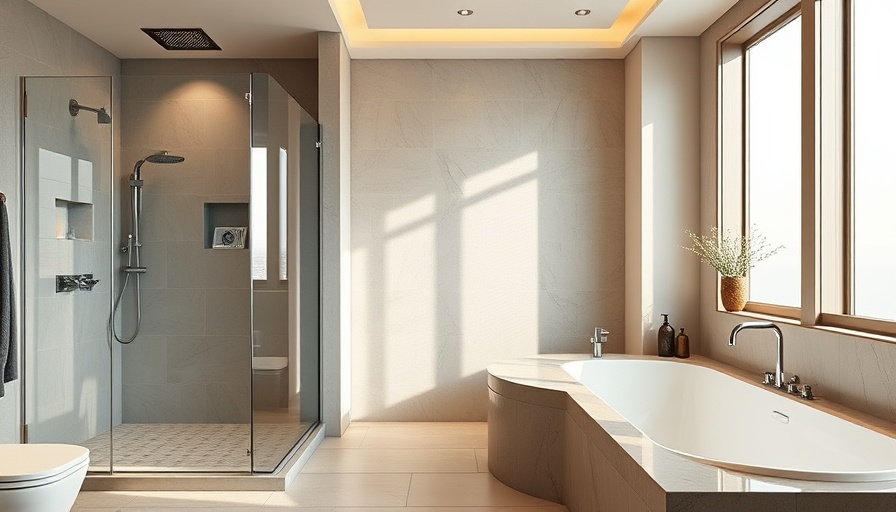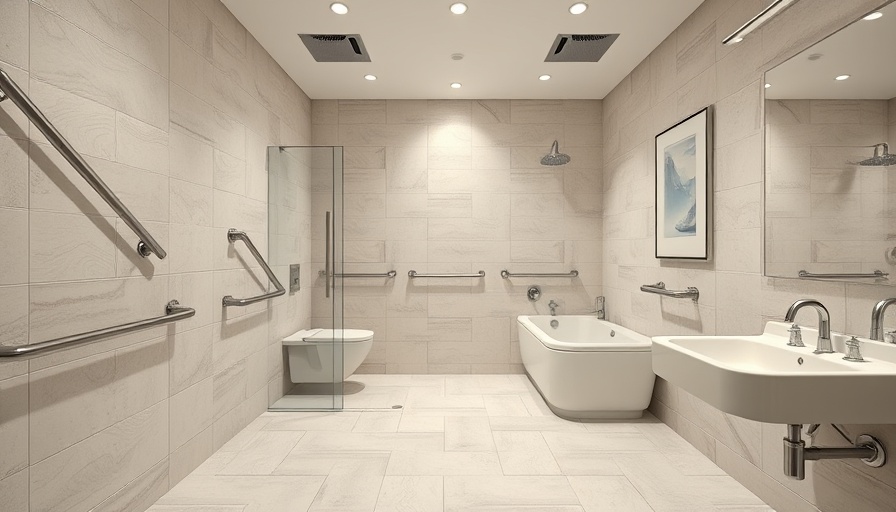
Understanding Safe Bathing Solutions for a Comfortable Home
Safe bathing options are increasingly essential for maintaining independence and comfort, particularly for individuals over 55. The debate between walk-in tubs and showers often revolves around the unique benefits each brings to the table, especially for those with mobility challenges. This guidance dives into the safety features, comforts, and practicalities of both types of bathing solutions, helping you navigate your preferences and needs.
The Safety Advantages of Walk-In Tubs
Walk-in tubs are designed with unique safety features that significantly enhance accessibility. Low entry thresholds minimize the risk of slips and falls, making them ideal for individuals with limited mobility. The built-in grab bars provide excellent support, easing the transition in and out of the tub. Moreover, these tubs can be outfitted with slip-resistant surfaces and anti-scald technology, valuable attributes highlighted by experts in the field.
For senior citizens or those recovering from surgery, these features can make a notable difference in daily routine. Furthermore, the contoured seating in many models allows seasoned bathers to relax comfortably. As bathing turns from a mundane chore into a rejuvenating experience, the safety mechanisms of walk-in tubs deliver peace of mind with every use.
The Versatility and Convenience of Showers
On the other hand, showers present compelling benefits, particularly when it comes to design flexibility and efficiency. Their space-saving nature is a significant advantage for compact bathrooms, as a shower can often fit where a walk-in tub cannot. Beyond just aesthetics, showers typically provide a quicker alternative for daily hygiene routines, accommodating busy households or individuals who prefer standing over sitting.
Customizability remains a key selling point. With options such as handheld showerheads and various adjustable settings, showers can cater to a diverse audience. Designed correctly, they can transform a bathroom into a modern retreat where functionality meets style.
Essential Considerations for Making a Choice
When selecting between walk-in tubs and showers, understanding your personal needs is vital. Assess your mobility levels—if you require significant assistance, a walk-in tub could be the right choice. In contrast, if you enjoy the quickness and convenience of a shower, prioritizing that option may align more closely with your lifestyle.
Your bathroom’s layout also plays a critical role; those with limited space may find that a shower is the most feasible option. Additionally, think about finances: while walk-in tubs often require a higher initial investment, they provide long-term benefits associated with safety and comfort.
The Impact on Quality of Life
The decision between a walk-in tub and a shower transcends aesthetics; it can influence daily living and overall well-being. Bathing can signify more than hygiene; it embodies relaxation and self-care rituals. A walk-in tub offers the experience of soaking, allowing you to unwind after a long day.
In contrast, showers can promote an invigorating start to your day or a refreshing cleansing routine after work. Regardless of choice, having bathing solutions tailored to your lifestyle can contribute to a happier and healthier life.
Closing Thoughts: Embracing Your Personalized Bathing Experience
Selecting the right bathing solution is a personal journey that encompasses safety, comfort, and practicality. Whether you lean towards the tranquility of a walk-in tub or the versatility of a shower, making informed decisions enriches your daily routines and promotes well-being.
For a deeper dive into enhancing bathroom safety, consider exploring our expert insights or consulting with professionals to assess your unique needs and options. Your safe bathing experience awaits!
 Add Row
Add Row  Add
Add 




 Add Row
Add Row  Add
Add 

Write A Comment